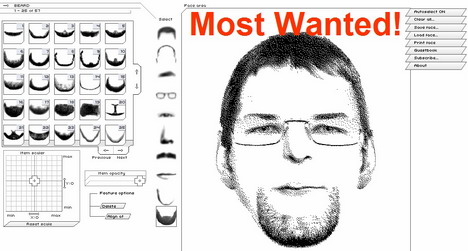Terraspring fights waste
CTO Ashar Aziz describes the need for intelligent systems management tools
COMPANIES SUCH AS IBM, Sun, and Computer Associates are fond of laying out visions for self-healing systems and autonomic computing, but one startup company appears to be years ahead of them. Terraspring has created a new information systems architecture that takes the automation of systems management to a new level. In an interview with InfoWorld Editor in Chief Michael Vizard, Terraspring CTO Ashar Aziz talks about the waste of resources that permeates IT today and the need for more intelligent tools to eliminate waste while enhancing business continuity.
InfoWorld: What is the state of systems management today?
Aziz: When I first started looking at the problem of enterprise IT infrastructures, namely the complexity and labor intensity involved in setting these infrastructures up, it struck me as a very unoptimal way of running IT infrastructures. In fact, it’s very medieval. We are manually provisioning compute and storage capacity today. An IT environment with just 10 or 15 servers can take days to weeks to set up.
InfoWorld: Given the medieval state of things, how much computing horsepower is being wasted in the average IT organization?
Aziz: When we talk to the CIOs or the CTOs at large enterprises, for them, they are painfully aware they’re not getting more than 10 [percent] to 15 percent utilization on their infrastructure. That’s a colossal waste. They are spending hundreds of millions of dollars every year, and 85 percent of that to 90 percent of that is being wasted because of underutilization. They can double or triple that, which is an offer that we make them, and their eyes light up because they know that this is a problem they have. They just don’t know that there’s a technology out there that can solve it.
InfoWorld: So what is Terraspring doing about this problem?
Aziz: A better way is to have this layer of software for comprehensive automation. The analogy we frequently hear is to let people have a graphical tool to think about the logical structure of an IT environment. What we have done is taken the graphical tool metaphor and connected it to reality. You can drag and drop all the stuff to create the topology you want, create the software profile, and hit the Apply button. When you hit that Apply button, that infrastructure is automatically instantiated on top of an “infrastructure fabric,” as we call them. It’s a programmable infrastructure. It’s an infrastructure that, by virtue of a description language that we have developed, takes a visual description, gets described into an entire IT infrastructure environment description, and automatically deploys that. We’re able to automate the cloning of servers in a specified operating system and application environment.
InfoWorld: And this will work on any set of systems?
Aziz: We have an open platform. We can take Sun servers, HP servers, AIX servers, Cisco switches, existing off-the-shelf load balancers, firewalls, and connect them all into this predefined specified blueprint that is a wire-once and virtually rewire many times on the fly [platform]. When our software is layered on top of that blueprint, it becomes a smart infrastructure. You can run any operating environment on this infrastructure.
InfoWorld: How will that infrastructure change the way IT people do their jobs?
Aziz: Think of the smart infrastructure that can be driven by joysticks. The joystick is the UI that’s Web-based. If I want more resources I can dial them up, I can ask for more storage, I can ask for more Web servers [or] application servers. Whatever kind of compute environment I have, I can bring in more capacity. Servers are automatically configured with the right software profile, and we have this storage virtualization fabric that’s able to bind predefined application and operating system images to a server. That server then comes in the right network topology. All of that is managed automatically under the sheets.
InfoWorld: Why can this be done now vs. a few years ago?
Aziz: This is the Gordian knot that people have not been able to untie for a long time. A lot of emerging technologies have helped solve some of these issues, so we now have switch fabrics [that can be virtualized]. We now have SANs [storage area networks] to help make those dynamic bindings. And we have devices that can help implement security on those SANs. So now we have the basic building blocks, if you will, to construct a programmable server infrastructure which, maybe just even three or four years ago, would have been very hard to do because all of these technologies were very immature then. It’s a confluence of emerging technologies.
InfoWorld: Given recent world events, what role could Terraspring play in disaster recovery?
Aziz: One of the things we figured out was the fact that disaster recovery requires more than simply replicating your data. When your production environments go down, you may have the data that was sitting in your database, but you also have to create the surrounding infrastructure. A technology that can automatically recreate an infrastructure based on a description is very, very key because now we are addressing every aspect of the infrastructure, not just the data in your database.
InfoWorld: In your opinion, where is the largest amount of hidden costs in IT today?
Aziz: What is rarely discussed, but is a huge problem, is that all the production infrastructures have a very large shadow infrastructure. For my production applications, I need n staging environments. They all have to be different because all my production applications are different. It’s not uncommon to see anywhere from 2 times to 5 times the amount of resources in this shadow environment. We call this the part of the iceberg that’s under water. The tip of the iceberg is the production environment and then the rest of this iceberg is the shadow environment. People today are not aware that they can actually consolidate these IT environments if they had the technology that could dynamically morph itself into the appropriate application environment. Terraspring technology can allow you to do this. You can essentially take your IT infrastructure and saw it in half potentially by doing this kind of consolidation. A lot of people don’t talk about [this] because it’s all the dirty laundry of the IT industry.
InfoWorld: How does what you’re doing today differ from what IBM talks about as a future research project under the heading of autonomic computing?
Aziz: I think our long-term visions are aligned. The main difference is that we will be shipping a product that actually accomplishes that. I don’t think there is a player in the industry that is in that position today. We have a very strategic relationship with IBM, and we are in discussion with virtually every group inside IBM that you can imagine, including the Project Eliza group. I think it’s fair to say that the vision is aligned. We are working on a business relationship with IBM as we speak, but there is nothing done to date that we can report.
InfoWorld: What will you do next after the current 1.0 release?
Aziz: We have visibility across the entire infrastructure. What we are planning in a future release is to enable the collection of application-level metrics and tie them into a rules-based-driven engine that will be able to optimize performance for a specific application environment. That is the Holy Grail. Figuring out and self-optimizing that environment is a complex task. You have to take into account all the issues at the application layer and the infrastructure layer together to optimize that environment. We have created a platform that gives you n degrees of freedom, and the next step is to automate those n degrees of freedom.
InfoWorld: How do you work with existing IT management tools?
Aziz: We don’t want to go off and replicate their entire functionality. They can be layered on top of our infrastructure. To date we have done an integration project involving HP OpenView. In the future we’ll be making that open.
InfoWorld: What role does XML play in your architecture and what impact will Web services have on it?
Aziz: We are leveraging technologies like XML as underlying description infrastructure. But one of the key things that has to be handled in the context of a mature Web service is that when you have applications that are linked, change control becomes very, very important. Unless Web services evolve in a way that that change control can propagate and be intelligently communicated to all the dependent distributed application elements, it will be hard to make it a reality. I think the tension here is between creating a very complex distributed infrastructure vs. centralizing certain elements of it. If you think about what we’ve done, we are able to consolidate and essentially centralize distributed computing elements. Perhaps a similar model is required for distributed applications.




